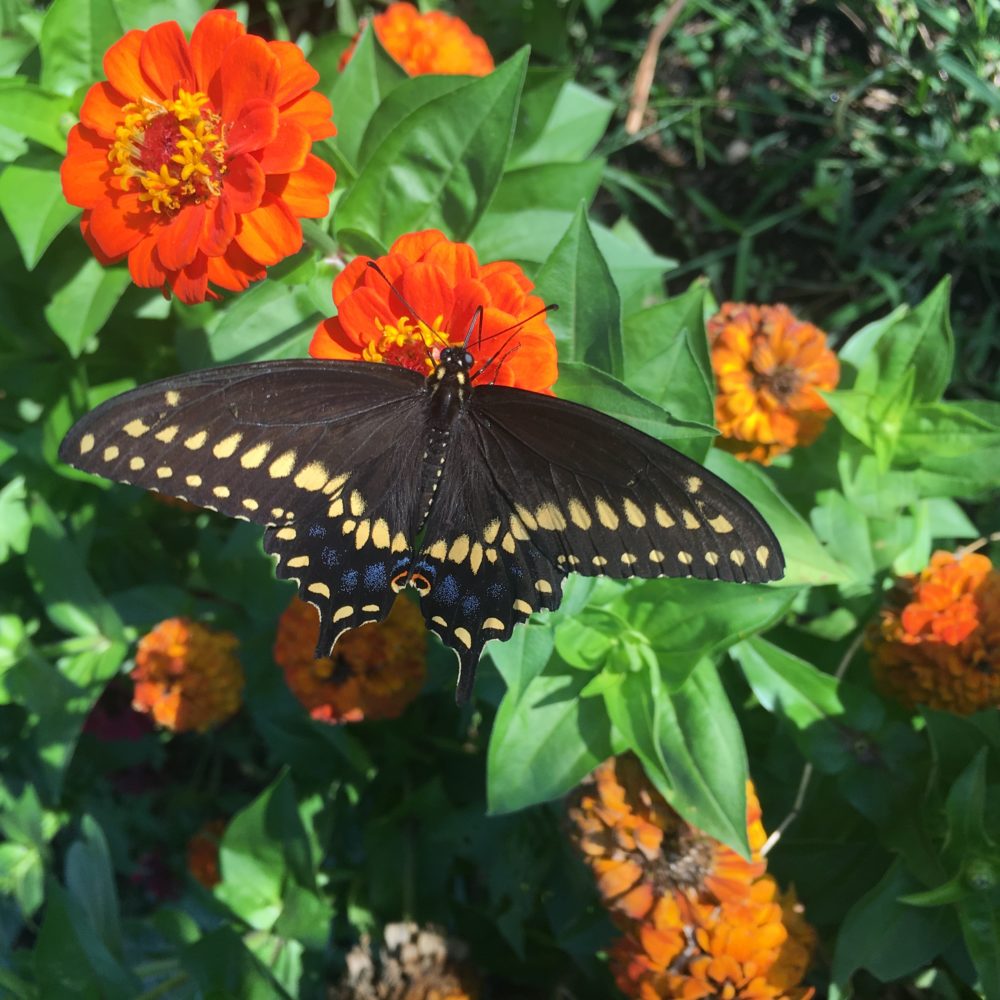The Power of Pollinators

While we all garden for pleasure and the delight in fresh picked foods, we add another dimension when we support pollinators. In Illinois alone there are 500 species of native bees—metallic green and blue bees, nothing like the fuzzy yellow and black iconic honey bee. Bees provide for the existence of many plant species and in turn, all terrestrial animals, including us. About one-third of every bite of food we take comes via the work of a pollinator, most often a bee. As butterflies, wasps, and bees travel from plant to plant to drink nectar or feed on pollen, they carry pollen grains, the genetic material critical to the reproductive system of most flowering plants. Somewhere between 75% and 95% of all flowering plants on the earth need help with pollination. Pollination starts the production of seeds and from there, everything we grow and love to eat begins.
Some pollinators like hummingbirds are champions, others are accidental pollinators. As many as 1,500 species of vertebrates such as birds and mammals serve as pollinators. Wandering between different species, they drop pollen as they go. Much of the pollen captured by bees is their own source of protein, but bees and butterflies need nectar to stay alive from hour to hour while foraging. The pollinator seed packets that CCGA Resources put into your seed distribution bags are just a start, but a critically important source of nectar.
Nectar sources are best when there is a mass of flowers so the nectar can be easily sourced. If your garden is buzzing with bees or splashed with the color of butterflies, you are supporting pollinators. Both early spring and late fall blooming species are needed because plants produce nectar only as long as their flowers are open. Once the plant has gone to seed, no nectar is available. So, alyssum, zinnia, foxglove or salvia, and cosmos help in this ancient but critical task. Think about bee-friendly bulbs like grape hyacinths, snowdrops, and alliums for fall planting.
Balance flowering plants in your garden based on performance and pollinator attractiveness:
• diversity is far most important
• native plants are most useful
• season blooms are important
